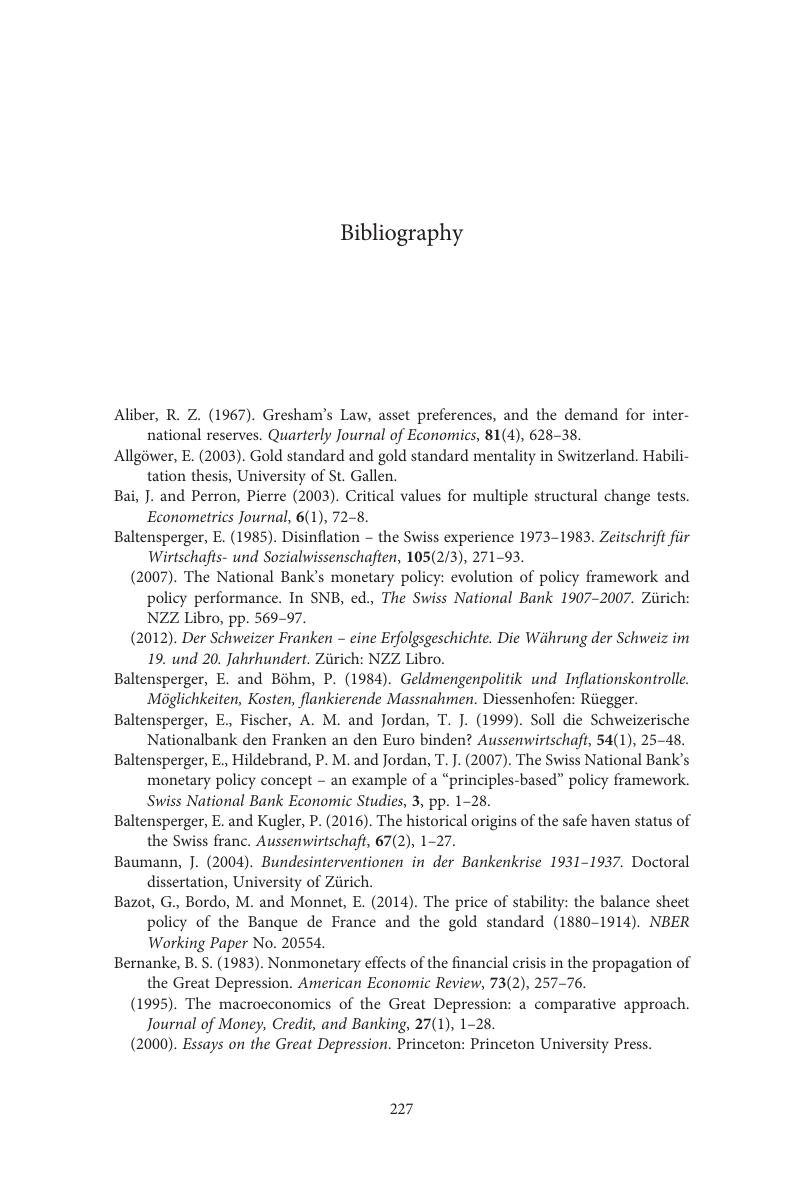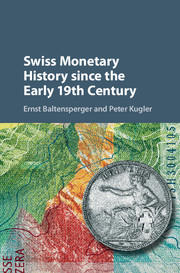Book contents
- Swiss Monetary History since the Early 19th Century
- Studies in Macroeconomic History
- Swiss Monetary History since the Early 19th Century
- Copyright page
- Contents
- Figures
- Tables
- Foreword
- Acknowledgments
- Introduction
- Part I Political and Economic Development of Switzerland
- Part II A Chronological Review of Swiss Monetary History in the Nineteenth and Twentieth Centuries
- Part III Key Questions and General Insights from Swiss Monetary Experience
- Bibliography
- Index
- Miscellaneous Endmatter
- References
Bibliography
Published online by Cambridge University Press: 28 July 2017
- Swiss Monetary History since the Early 19th Century
- Studies in Macroeconomic History
- Swiss Monetary History since the Early 19th Century
- Copyright page
- Contents
- Figures
- Tables
- Foreword
- Acknowledgments
- Introduction
- Part I Political and Economic Development of Switzerland
- Part II A Chronological Review of Swiss Monetary History in the Nineteenth and Twentieth Centuries
- Part III Key Questions and General Insights from Swiss Monetary Experience
- Bibliography
- Index
- Miscellaneous Endmatter
- References
Summary

- Type
- Chapter
- Information
- Swiss Monetary History since the Early 19th Century , pp. 227 - 236Publisher: Cambridge University PressPrint publication year: 2017



